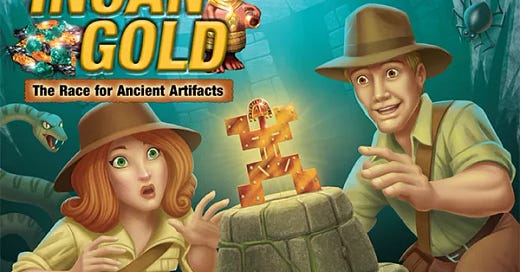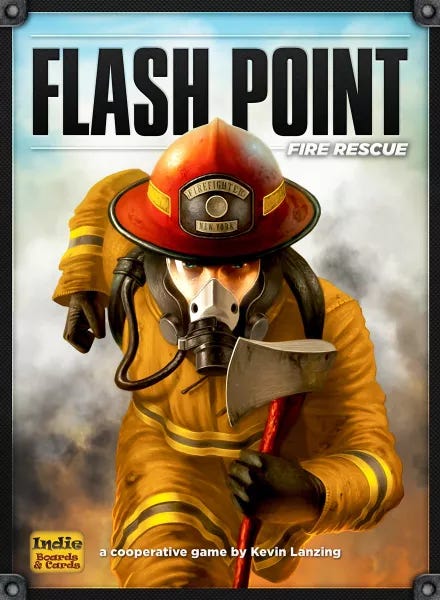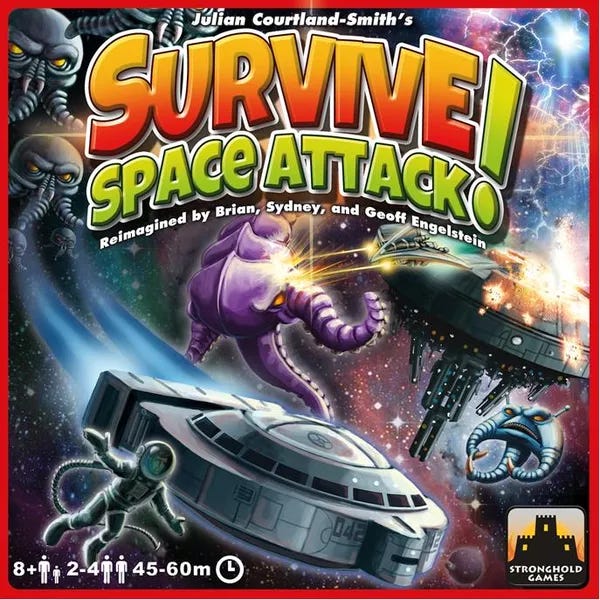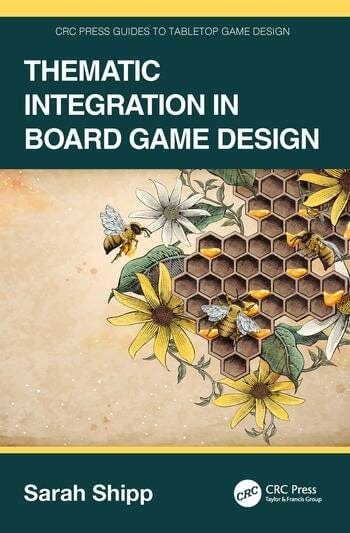This GameTek was originally broadcast in 2015. It led to a recent development that I will return to at the end and will explore in Part 2.
I was once told by a famous game designer: if one more person asks me if I start with mechanics or theme first, I'm going to punch them.
Mechanics and theme should work harmoniously together in a very real sense, one cannot exist without the other. Now, I was reminded of a big discussion in Robert McKee's book, Story, about screenwriting.
He says that he's constantly asked which is more important in a story, plot or character, and explains that the question is meaningless. Plot and character are, in essence, the same thing. The plot arises from a character making decisions, and those decisions define the character.
The plot and characters feedback on each other in a loop, characters making decisions that move the plot forward, and that movement forcing characters to make decisions on how to react, and around and around. In a game, the connection might not be quite as tight, but when they are at odds with each other, it can undermine what the game is trying to accomplish. The combination of mechanics and theme result in the player experience, and it is that experience that good designers are focusing on.
Let's do a thought experiment. The wonderful Incan Gold, or Diamante, as it is also known by Bruno Faidutti and Alan Moon, cast the players as Indiana Jones types, exploring deeper and deeper into a cave to try to grab the most gems. Each turn, every player makes a simple decision, move further into the cave and risk losing all your loot, or go home and bank what you've found.
As the cave fills with hazards, the tension builds. The mechanics and theme here are perfectly intertwined, and they support the tension and the narrative.
Flashpoint: Fire Rescue, from designer Kevin Lansing, is a cooperative game about firefighting. The players must work together to rescue at least 7 out of 10 people trapped in a burning building. It also features a push-a-luck mechanic, as the players have to take chances in guessing how the fire will spread. Flashpoint is another excellent integration of theme and mechanisms.
The cooperative nature, the spreading of the fire, all work together to build tension and give the players a satisfying experience.
Let's combine these games, retheming Incan Gold with firefighters trying to rescue as many people as possible from a burning house before it collapses.
So now, unlike Flashpoint, this is a competitive game, but players don't directly get in each other's way. It's as if each is pushing forward into the building separately and trying to rescue people. Or we can say that the farther they get into the building, the more heroism points they earn.
When the fighters think that it's too risky to continue to push on, they leave the building and have that many heroism points. Other players may try to earn more heroism, staying in the building longer before leaving. Mechanically, this is exactly the same as Incan Gold, but personally I would not be as satisfied playing this game.
As a player, I would have a different experience. In Incan Gold, I'm Indiana Jones trying to push my luck to get golden jewels, and if I stay in too long, it was because I was too greedy, and the other players can laugh at me. But if I'm a firefighter and push too far into a burning building to try to save more people? I think it would actually be a tougher decision to decide to turn back and leave the building, even at the risk of losing the game.
Psychologically, the new theme turns the decision it wants the players to make on its head. In Incan Gold, leaving and not being greedy is the safe, sane, and society-approved choice. In our fire game, leaving early is cowardly, against the code of firefighting, and puts other people's lives at risk.
The theme and mechanics combine to make a very different experience for the players, one where what the designer wants may differ greatly from what the players are actually doing. We experienced a similar thing when designing Survive: Space Attack. In the original Survive, the players are attacked by other players in the guise of sharks and sea monsters.
In our initial re-theme, we riffed on a Death Star attack. The island was now the Death Star. The player tokens were imperial grunts fleeing for safety. The sea creatures became rebel fighters that attack the player tokens as they try to float to safety in escape pods or just out in their spacesuits.
But there's a real difference in attitude when you use a shark to go after someone swimming than if you're piloting an X-Wing and actually just shooting innocent defenseless people floating in a spacesuit. Yes, they both end up dead, but the psychology of it turned out to be completely different, and we ended up scrapping that whole design for generic bug-like aliens which fulfilled the same roles as in the original game.
As a designer, you need to pay attention to the linkage of both theme and mechanics and make sure that they reinforce where you want to take the players. And as an experiment, you might try to make a firefighting-themed Incan Gold and see if it actually does change how long the players stick it out before heading back home.
Several years after I broadcast this piece, I was contacted by Dr. Stephen Blessing at the University of Tampa. He had actually gotten funding to run the Incan Gold experiment! He and his team put together three versions of the game - the normal Indiana Jones theme, the fire-fighting theme, and a completely themeless version.
What were the results? I’ll dive into the data in the next GameTek, but I encourage you to come up with your own predictions to see how well our intuition matches reality.
New Book! Thematic Integration in Board Game Design
I am pleased to announce that I am the series editor for a new collection of books on tabletop game design from CRC Press. Each is a tightly-focused deep dive into a single topic.
The first in the series was just released: Thematic Integration in Board Game Design, by Sarah Shipp. See how the main topic of this newsletter fits thematically with the book announcement?
Sarah is a game designer, her most recent being Deadly Dowagers. She writes the terrific and highly recommended ShippBoard Games blog about game design, and I was delighted she contributed a volume to the series.
The next book will be a deep dive into Graphic Design for Board Games from the very talented Daniel Solis. It’s chock-full of examples and specific recommendations, and I think will be a touchstone for any graphic designer in the board game field for years to come.
If you have an idea for a book you think would be a good fit, please reach out to me at geoff@engelstein.net.







